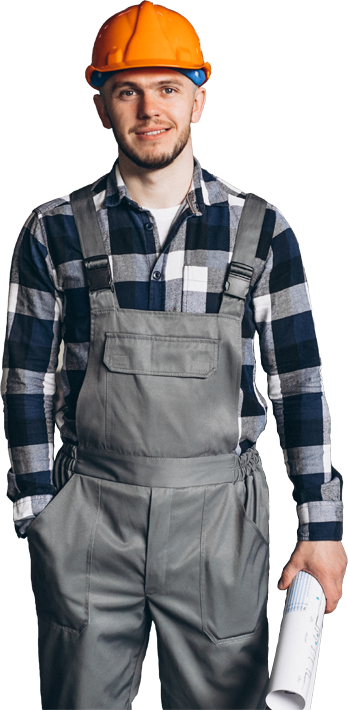Find informative answers to all your questions below.
Our office staff will review our schedule with you. We are available for consultations five days a week.
We prefer to see our patients in our office, where we have the proper tools and machinery for casting and adjusting of your device. However, we will do in home consultations for patients who are homebound and do not have the ability to come to our office.
Depending on your needs, you will be seen by either a licensed prosthetist or orthotist who is highly qualified and certified in the areas of orthotic and prosthetic design and care.
Please bring all insurance information, X-rays, shoes, past orthotic and prosthetic devices and any medical correspondence that may pertain to your condition so that we can determine the best possible treatment and device for your needs. Also, please bring your prescription to your initial appointment.
No, you do not have to see a doctor, however, it is highly recommended. During your initial visit, you will be evaluated, your goals will be established and the appropriate type of device will be recommended. We prefer to consult with your physician before, during and after working with you to ensure the best possible care.
Most insurance companies do cover orthotic and prosthetic services. The types of services they cover and the amount of coverage depends on your insurance and benefits. We recommend that you contact your insurance company prior to your appointment with us and ask for an explanation of your orthotic and prosthetic coverage and benefits.
The type of device needed and its design dictate the number of appointments needed. A minimum of three appointments is generally needed for a custom device, for evaluation, casting, fitting, delivery and follow - up. Your practitioner will provide you with a more accurate time frame during your initial consultation.
PROSTHETICS
Your residual limb must be completely healed prior to being fited with your prosthesis. We suggest that you be fitted with a “shrinker” as soon as it can be tolerated. A prosthetic shrinker is an elastic sock that fits around your residual limb and helps decrease the edema or swelling of your leg in preparation for prosthetic fitting. Once we can fit you with the prosthesis, it will take between two and six weeks to complete the entire process.
Prosthetics are designed to be worn during the day and removed while sleeping. We recommend that you wear a “shrinker” on your residual limb at night to maintain the shape and configuration and help reduce edema and swelling of the residual limb. We also recommend that you apply creams to the skin during the evening.
Your prosthesis is aligned for a particular type of shoe and heel height. The alignment of the prosthesis affects its stability and the ease of taking steps. We can incorporate a special foot, with an adjustment mechanism, for patients who would like to wear different heel heights.
We recommend having your prosthesis checked at least once a week following the initial delivery. As your skin becomes used to the pressure and you become more comfortable wearing it, you can have it checked less frequently.We also recommend that you initially check your skin several times a day for redness and pressure, and contact us immediately if you experience any changes in your skin’s condition or any discomfort. Once you are comfortable with your prosthesis, we recommend checkups every six months, to make sure the liners, alignment and socket materials are fitting well and the prosthesis is performing at the maximum level.
Most prosthesis are applied by hand. They utilize a sock that goes next to your skin with a liner over the top that is slid into the prosthesis. Either a sleeve is added to the outside or a suction flexible silicone liner is rolled over the skin and incorporating a lock or pin along the very bottom of the skin that slides into the socket and mechanically attaches and holds it in place. Various types of other mechanical straps, sleeves or suction mechanisms can be added to the prosthesis to hold it in place. The better the prosthesis is held to your skin, the less pistoning and skin irritation you will experience.
Most prosthesis cannot be used in the shower because they contain metal components that will rust. However, we can design prosthesis that are made out of fiberglass and/or plastic components if you need them to be waterproof.
Although physical therapy is not required, we do recommend it after you receive your initial prosthesis. A physical therapist can help you learn to walk efficiently with your new limb, expediting the rehabilitation process. The physical therapist will work with you on maintaining your balance, strengthening your limb and improving your gait pattern. We also recommend physical therapy if your condition changes or you obtain a new prosthesis.
Prostheses can either look like an anatomical leg or can be designed to be an expression of your personality. We often design prostheses with cosmetic covers or soft covers that go over the socket, mid-calf, knee, thigh area and foot so they look anatomically correct. Alternatively, we can apply a design of your choosing.
We will answer all of your questions about prosthetics while working with you on your specific device. During the design phase, we will discuss the various sockets, liners, knees and feet available. We can also have you talk to different patients about their prosthetics.
Hygiene is very important in prosthetic care, particularly against the skin. We suggest that you wash your skin daily with soap and water. Depending on your skin's sensitivity, we also suggest that you use rubbing alcohol to decrease any bacteria formation. You should wash the liner and suspension sleeve of your prosthesis daily to decrease accumulation of bacteria, which can cause infections.

